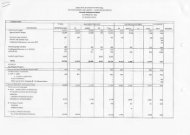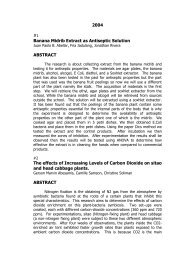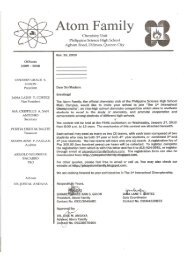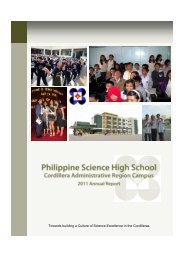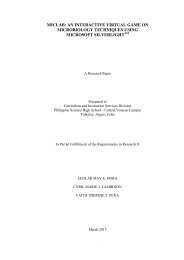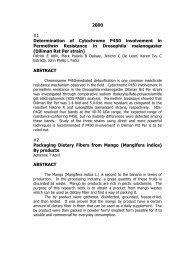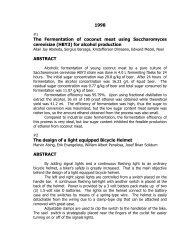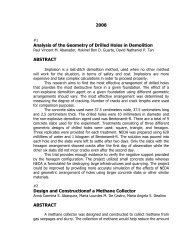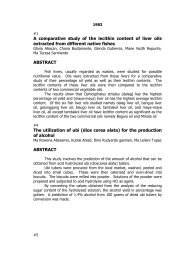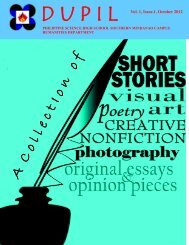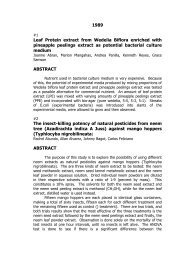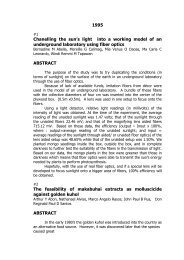A comparative study of paper produced from zea mays - Philippine ...
A comparative study of paper produced from zea mays - Philippine ...
A comparative study of paper produced from zea mays - Philippine ...
Create successful ePaper yourself
Turn your PDF publications into a flip-book with our unique Google optimized e-Paper software.
The results <strong>of</strong> the Chiu-Square show that although more people would<br />
rather purchase the commercial drink, the difference is statistically<br />
insignificant.<br />
#8<br />
The chemical analysis <strong>of</strong> the nutritive content <strong>of</strong> terminalia<br />
catappa fruitpericarp and nut<br />
Edilberto Alcanzare, Sheryll Baranda, Wilfredo Manuela, Cesar Guinto, John<br />
Ysrael Baluyut<br />
ABSTRACT<br />
The <strong>study</strong> involved a proximate analysis <strong>of</strong> the fruit’s nutritive content.<br />
The values obtained were then compared with common food sources.<br />
The edibled portion <strong>of</strong> the talisai fruit frut are 57% and 5% for its<br />
pericarp and nuts respectively. The fruit’s pericarp is composed <strong>of</strong> 90.35%<br />
moisture, 0.20% crude fiber, 0.06% ash, 1.05% protein, 4.31% fat and<br />
4.03% carbohydrate. For the nut, its composition is as follows: 34.100%<br />
moisture, 2.38% crude fiber, 3.34% ash, 2.11% protein, 35.30 fat and<br />
22.77% carbohydrate.<br />
The nut has a higher nutritive value compared to the pericarp and is<br />
therefore a better food source.<br />
#9<br />
Feasibility <strong>of</strong> carica papaya trunk and leaves as a source <strong>of</strong><br />
<strong>paper</strong> pulp<br />
Jesus Almendral, Dionisio Diokno III, Albert Palima, Edwin Rodriguez, Virgil<br />
Saldajeno<br />
ABSTRACT<br />
Soda pulps obtained <strong>from</strong> the leaves and trunk <strong>of</strong> Carica papaya<br />
(papaya) were subjected to a quantitative chemical analysis. Results were<br />
then compared with standards to determine whether such pulps are suitable<br />
for <strong>paper</strong>making.<br />
Results are as follows: leaves: 7.26% ash, 21.65% pentosan, 58.82%<br />
alpha-cellulose, 18.63% solubility in 1% NaOH; Trunk: 35.8% ash, 25.83%<br />
pentosan, 68.72% alpha-cellulose, 24.4% solubility in 1% NaOH. Standards<br />
are: less than .15% ash, 2-20% pentosan, more than 85% alpha-cellulose,<br />
less than 15% solubility in 1% NaOH.<br />
The pulps <strong>from</strong> the leaves and trunks <strong>of</strong> carica papaya are not good<br />
<strong>paper</strong> pulps due to the high ash and pentosan content, low- cellulose content,<br />
and high solubility in 1% NaOH.



